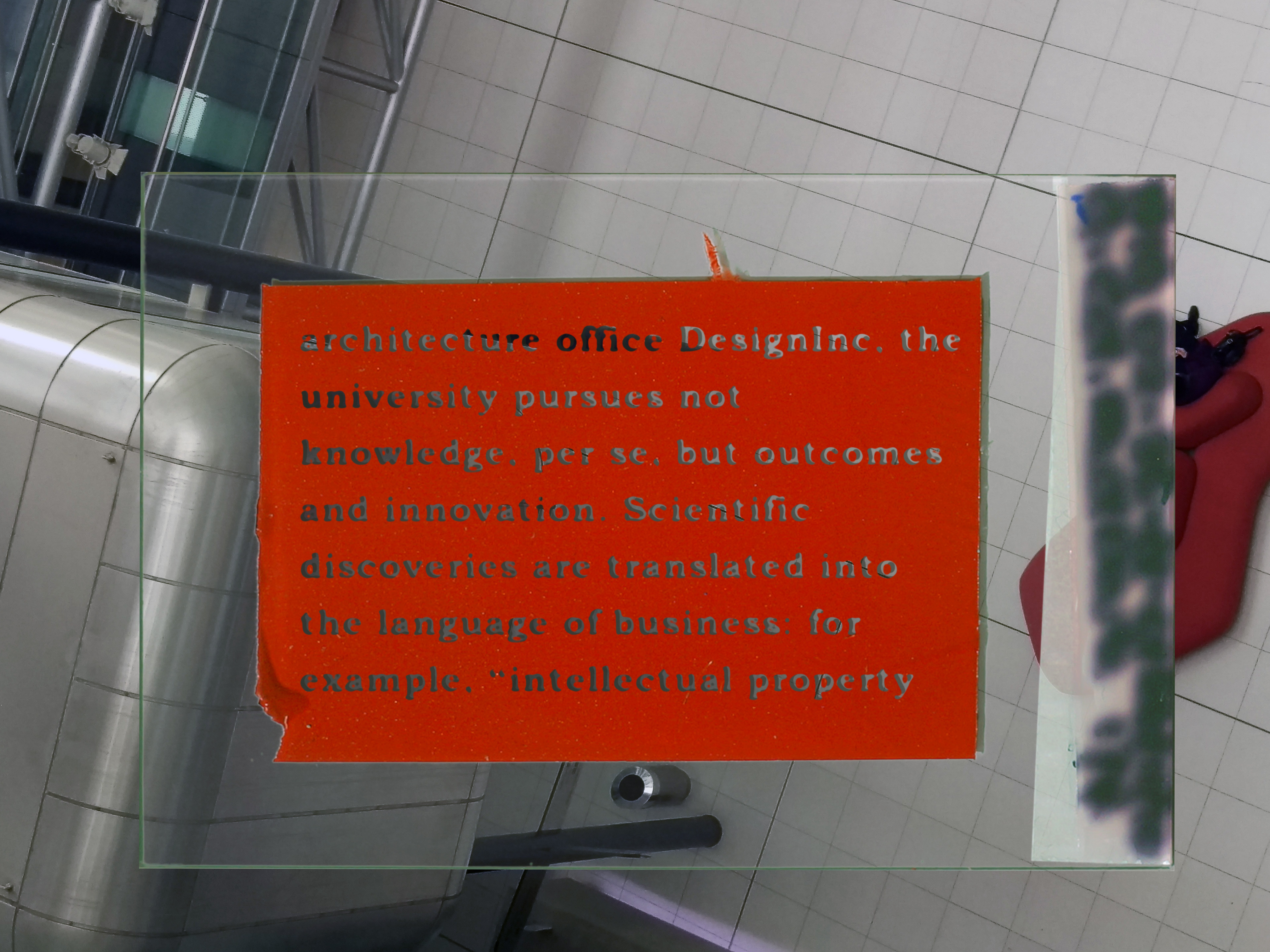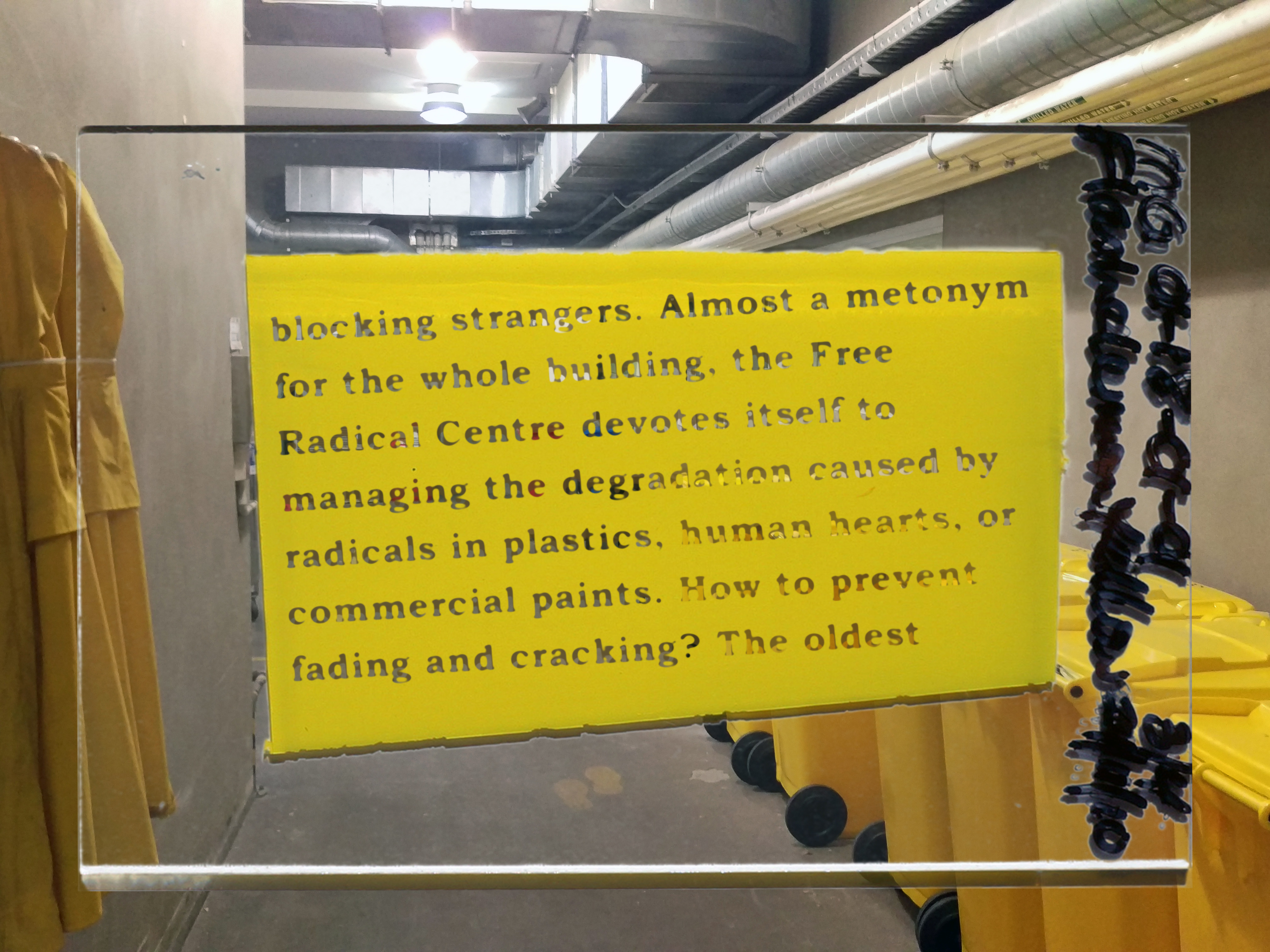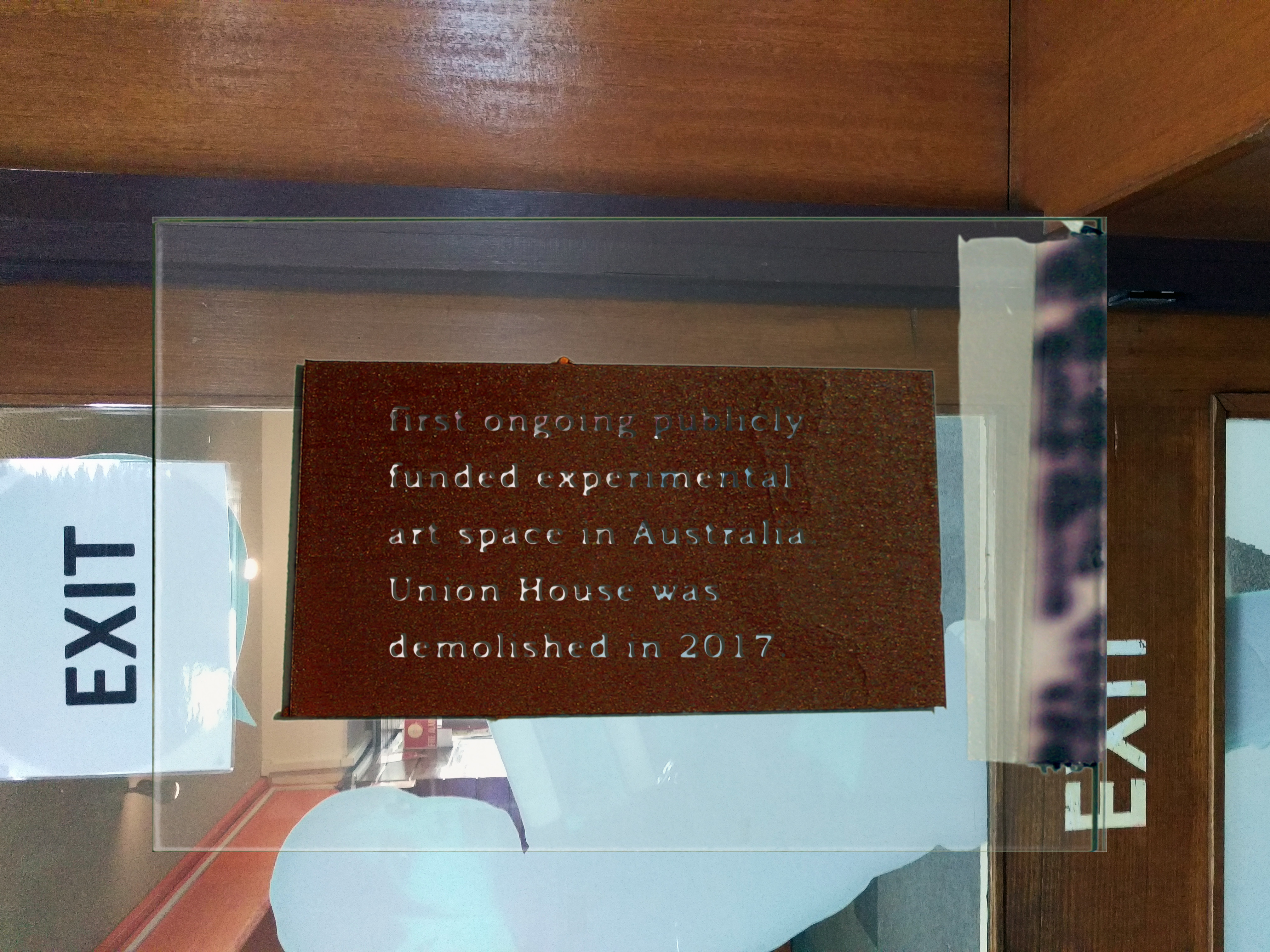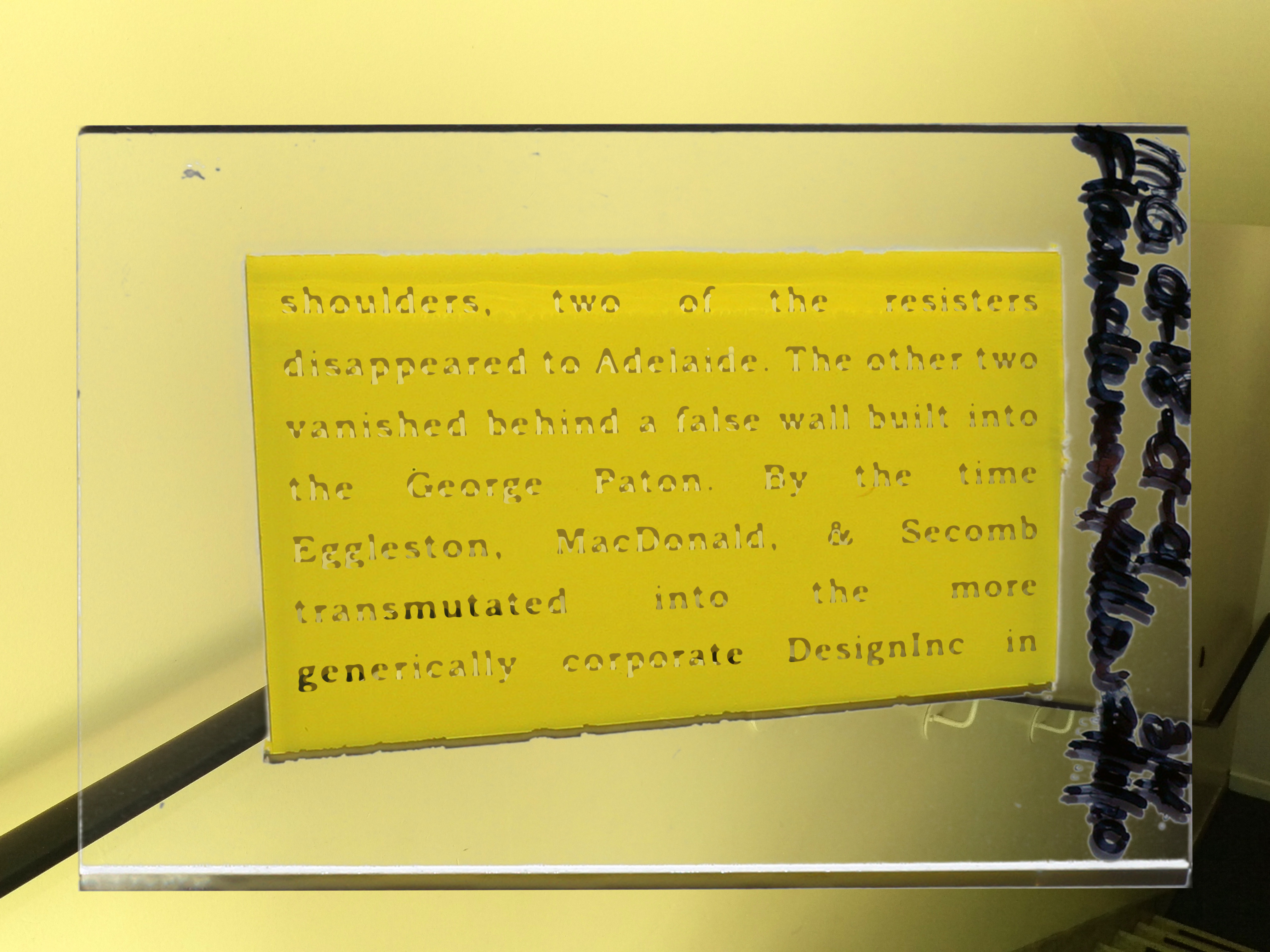Free Radicals
| Date: | 2016 |
| Format: | Installation with 2 calendars and a digital projection and video monitor |
| Index: | fiction installation |
Description
Free radicals in chemistry are unstable atoms or molecules and their effects can be seen in the oxidative damage of biological and manufatured materials, such as fading paint. A facility for biotechnological research called Bio21 was established at the University of Melbourne, housing the Centre for Free Radical Chemistry. This high tech, modern building was designed by the same architect that had designed Union House in 1968, which was a home of student arts and activism. How can the transformation of the university from 1968 to the present be traced through the story of these two buildings?
Often, an art/ science project will either aestheticise some scientific process or phenomena or will push ethical questions of scientific practice. This work reflects on the deeper institutional connections and genealogies, and making an unlikely historical and architectural connection between the George Paton Gallery and the Free Radicals Laboratory. Using paint samples and photography from the two buildings to create two out-of-date calendars (from the year each building was constructed), Free Radicals connects gifts the calendars to the gallery and the lab and creates a permanent relationship between them through the anachronistic object. A video projection in the gallery space explains this project and the social history of each building, intertwining the history of radical student politics in the gallery with the coincidental language of “free radical chemistry” in the lab.
Images





Exhibition
- Synthesis. George Paton Gallery, Melbourne, VIC, 2016
Acknowledgment
This research was conducted through a competitive, year-long Art / Chemistry residency at the Free Radicals Laboratory.